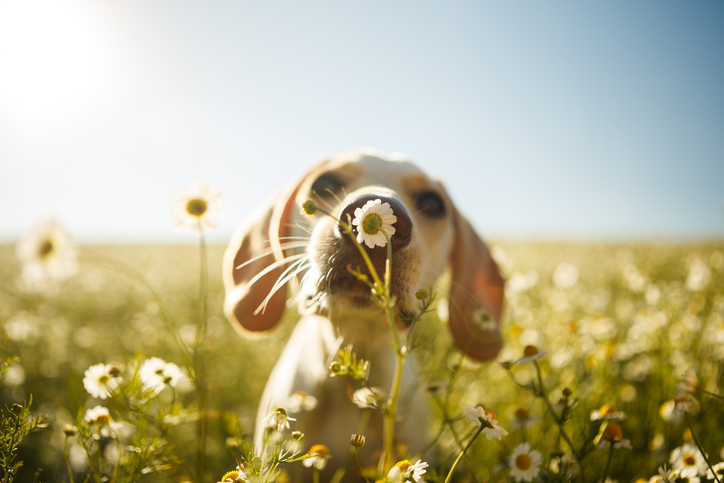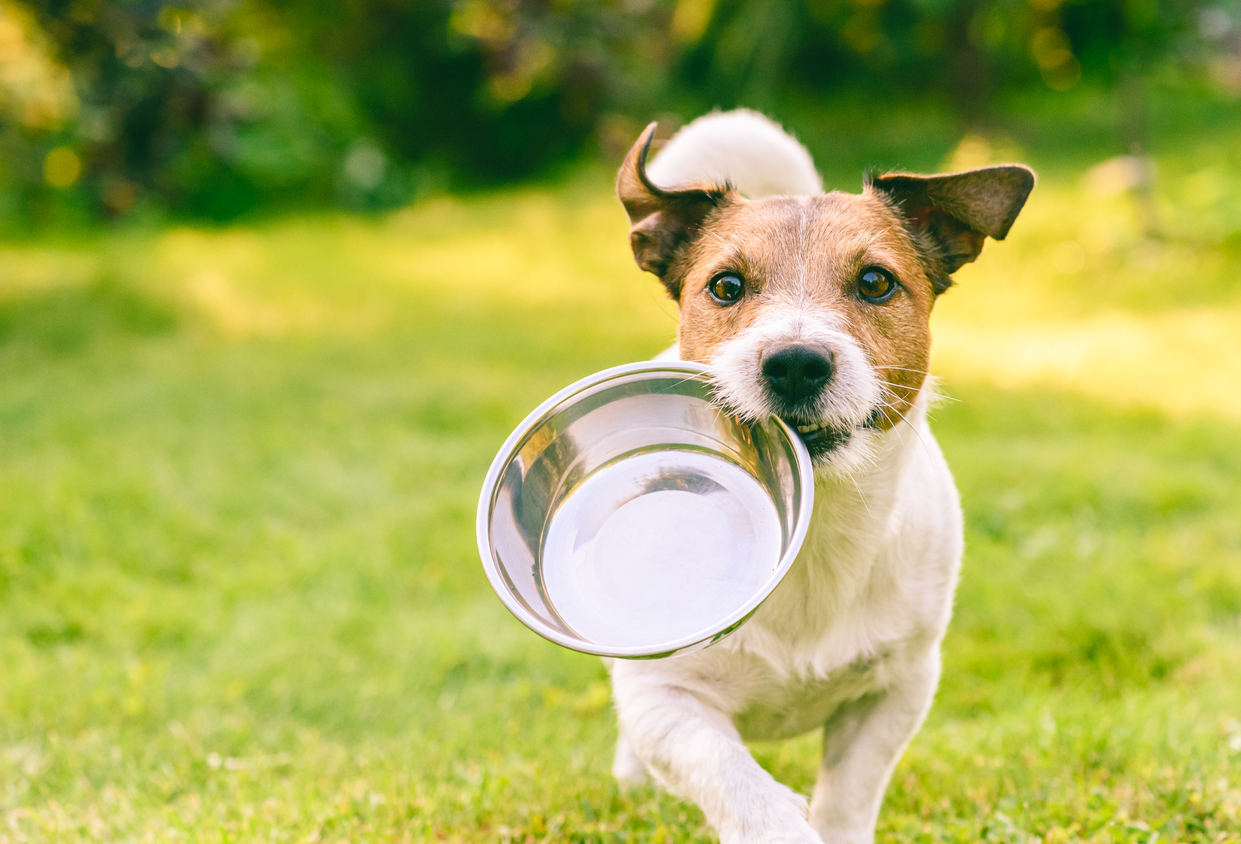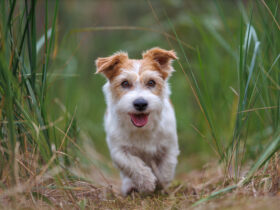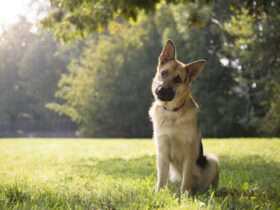Dogs are curious creatures by nature, but that curiosity can pose problems when it comes to plants. There are a variety of indoor and outdoor plants that are poisonous to dogs. While some of these plants will only cause discomfort, others can be fatal.
Below we will review the different plants that are poisonous to dogs and what you can do to protect your four-legged best friend.
Common Outdoor Plants That Are Toxic to Dogs
It’s important to know what plants are poisonous, whether they are in your backyard, inside your home, or you simply plan to take your dog for a walk in the park. Let’s review the various plants that your curious canine should avoid.
Azaleas
These showy flowers are popular garden plants that contain a neurotoxin called grayanotoxin that poses a serious threat to your dog. All parts of an azalea are poisonous to dogs when ingested.
Toxicity: Medium to high
Symptoms: Drooling, vomiting, diarrhea, loss of appetite, change in heart rate, temporary loss of vision, seizures.
Begonias
Begonias come in many different varieties, but they all contain calcium oxalates that will not agree with your dog’s mouth and stomach. Be sure to keep your dog away from the roots and bulbs of these plants as they are the most toxic.
Toxicity: Low
Symptoms: Vomiting, mouth irritation.
Black Walnut
The moldy nuts and shells of black walnut trees are especially harmful to dogs. These walnuts contain a chemical called juglone and a potentially toxic fungi that are both dangerous for your best friend.
Toxicity: High
Symptoms: Vomiting, fever, increased heart rate, muscle tremors, seizures.
Buckeye (Horse Chestnut)
These trees are known for their shiny, brown nuts, but all parts of buckeye tree are toxic to dogs. These trees contain a narcotic alkaloid and can cause a variety of health issues.
Toxicity: Moderate
Symptoms: Vomiting, diarrhea, fatigue, muscle tremors.
Chrysanthemums
All parts of these flowering plants are toxic to dogs. Chrysanthemums contain lactones and pyrethrin, both of which are irritants that are troublesome for your dog’s digestive tract.
Toxicity: Low
Symptoms: Excessive drooling, vomiting, diarrhea, and poor coordination.
Daffodils
These iconic flowers may be a popular choice for gardeners, but they contain a poisonous substance called lycorine. Daffodil bulbs are particularly toxic, but every part of the plant is unsafe for your dog.
Toxicity: High
Symptoms: Vomiting, diarrhea, abnormal breathing, increased heart rate, abdominal pain.
Fruit trees
Many familiar fruit trees, like apple, cherry, and avocado, can be harmful to your dog. The seeds, leaves, and stems of these fruit trees contain a chemical related to cyanide and are extremely toxic when eaten.
Toxicity: Medium to high
Symptoms: Difficulty breathing, diarrhea, dilated pupils, kidney damage, seizures.
Geraniums
Geraniums are a flowering shrub that can affect your dog in a couple of ways. Contact with the plant can affect your dog’s skin, while eating any part of the plant can cause various unpleasant side effects.
Toxicity: Low
Symptoms: Skin irritation, vomiting, fatigue, loss of appetite.
Hydrangeas
These flowering shrubs are a beautiful addition to your yard, but your dog should avoid them. Hydrangeas contain cyanogenic glycoside that can cause mostly mild symptoms but can be fatal in rare instances.
Toxicity: Mostly low
Symptoms: Fatigue, vomiting, diarrhea, skin irritation.
Ivy
There are a few varieties of ivy that are toxic to dogs, including branching, needlepoint, and English. All three contain triterpenoid saponins, with the leaves being the most toxic part of the plant.
Toxicity: Medium
Symptoms: Fever, diarrhea, trouble breathing, weakness, hyperactivity.
Lilies
Lilies are known for being extremely toxic to cats, but dogs should also avoid them. The symptoms are not as severe for dogs, but every part of this plant contains a toxin that can lead to unpleasant symptoms.
Toxicity: Low
Symptoms: Vomiting, diarrhea,
Lilies of the Valley
Also known as a muguet, these plants are technically not lilies. These flowers contain cardio glycosides that can cause several serious issues for dogs. The bulbs are the most toxic part, although your dog shouldn’t eat any other part of the plant.
Toxicity: High
Symptoms: Fatigue, drooling, vomiting, dehydration, slowed heart rate, seizures.
Oak
The common oak tree is generally non-toxic, but acorns are a legitimate danger for dogs. Acorns contain tannic acid that can upset your dog’s digestive system. They can also get stuck in your dog’s throat or intestines.
Toxicity: Mild
Symptoms: Upset stomach, diarrhea, abdominal pain.
Peonies
These large, colorful flowering shrubs are toxic to dogs because of a substance called paeonol. This substance is heavily concentrated in the shrub’s roots and bark, although all parts of the plant can cause mild symptoms.
Toxicity: Low
Symptoms: Vomiting, diarrhea.
Rhododendrons
Rhododendrons are closely related to azaleas and are similarly dangerous to dogs. Grayantoxin is present in all parts of the plant and can lead to severe, even fatal symptoms.
Toxicity: Medium to high
Symptoms: Drooling, vomiting, diarrhea, loss of appetite, change in heart rate, temporary loss of vision, seizures.
Tulips
These iconic flowers are toxic due to an allergen that tulips use as a defense mechanism called Tulipalin. This allergen can cause serious health conditions and is especially concentrated in the tulip bulbs.
Toxicity: Medium to high
Symptoms: Drooling, vomiting, diarrhea, rapid heart rate, difficulty breathing.
Yew
Yew trees aren’t as common as other trees on this list, but they are particularly dangerous to dogs. All parts of these evergreen trees can make your dog seriously ill and can even result in heart failure.
Toxicity: High
Symptoms: Drooling, vomiting, diarrhea, dehydration, dilated pupils, abdominal pain, difficulty breathing, irregular heartbeat, muscle tremors, seizures.

Common House Plants That Are Toxic to Dogs
The great outdoors isn’t the only setting where your furry friend can run into trouble with poisonous plants. Beware of offices, hospitals, and even inside your own home! The following plants can commonly be found indoors and should be avoided by your dog.
Aloe Vera
While some people like to use aloe vera to heal wounds, this plant is harmful to our furry friends. The gel of the plant is fine, but the inner skin of aloe vera leaves contain compounds that are toxic to dogs.
Toxicity: Low to medium
Symptoms: Vomiting, diarrhea, fatigue.
Dieffenbachia (Dumb Cane)
These tropical plants may look great at home or in an office, but they’re potentially fatal for dogs. Dieffenbachia stems and leaves contain acid and microscopic needle-like crystals that wreak havoc on your dog’s mouth, throat, and stomach and could potentially lead to asphyxiation.
Toxicity: High
Symptoms: Drooling, mouth irritation and swelling, vomiting, difficulty swallowing.
Philodendron
These popular houseplants are like dieffenbachia when it comes to how dangerous they are to dogs. The calcium crystals cannot be digested and will embed themselves into your dog’s mouth, throat, and stomach.
Toxicity: High
Symptoms: Drooling, mouth irritation and swelling, vomiting, difficulty swallowing.
Pothos (Devil’s Ivy)
Like other popular houseplants, pothos use calcium crystals to discourage animals from eating them. Dogs that eat their leaves and stems will likely experience severe stomach and mouth issues.
Toxicity: High
Symptoms: Drooling, mouth irritation and swelling, vomiting, difficulty swallowing.
Snake plants
Snake plants may look good in your home, but they don’t agree with your dog’s stomach. The saponins in these potted plants can cause digestive issues.
Toxicity: Low to medium
Symptoms: Drooling, nausea, vomiting, diarrhea.
Sago Palm
The sago palm is a popular tropical plant for homes, offices, and other places, but it’s also one of the most toxic plants to dogs. All parts of the sago palm contain cycasin, and even a single seed can cause serious issues.
Toxicity: High
Symptoms: Drooling, loss of appetite, vomiting, diarrhea, fatigue, weakness, abdominal pain, muscle tremors, seizures.
How to Keep Your Dog Away from Toxic Plants
The best way to protect your dog from poisonous flowers, trees, and other plants is prevention. You will want to take a proactive approach and take the following precautions to keep your dog as far away from danger as possible.
- Remove any toxic plants. The easiest way to protect your dog from toxic plants is to get them as far away as possible. Check your home, inside and outside, for any problem plants and remove them if possible.
- Move them out of reach. If you can’t remove the plants altogether, at least make sure that your dog can’t reach them.
- Create a barrier. Sometimes you can’t move a tree or a neighbor’s plant. Consider adding a fence, gates, or other types of barriers that will limit your dog’s access to toxic plants.
- Keep your dog on a leash. Dogs should be on a leash when you’re out for a variety of reasons – preventing them from interacting with poisonous plants is a big one. Keep an eye out for toxic plants and use your leash to keep them away from any suspicious plants.
What to Do if Your Dog Eats a Toxic Plant
There is always a chance that your dog may interact with toxic plants even after you take special precautions. When this happens, it’s important to use the following steps to take care of your dog.
- Stay calm. It can be very frightening when you suspect that your dog ate something poisonous, but it’s important not to panic. Take a few deep breaths and stay as calm as possible so that you’re in the best position to help your furry friend.
- Take the plant away. Don’t let your dog eat or interact with the plant more than they already have. Make sure that you get the plant far away from your dog so that you can limit the affects it may have on them.
- Assess the situation. Identify the plant and what parts of it they ate, if possible. It’s also good to take a sample or photos of the plant to share with an expert.
- Check your dog for any symptoms. Once you’ve identified what you can, do a quick check to see if your dog is showing any early signs of illness.
- Contact a professional. Some plants are more dangerous than others, but it’s always good to get an expert opinion. Call your veterinarian to see if your dog needs immediate medical attention and follow any instructions they give you. You can also contact the Pet Poison Helpline at (855) 764-7661 (just remember that there is an $85 fee when you call).
Get the Information You Need to Stay Safe
A little information can go a long way toward keeping your dog safe from toxic plants. Hopefully, this post can give you the knowledge you need to help your dog stay happy and healthy.
Want to learn more about how you can support your furry friend? Sign Up for the Best Friends Club for more educational articles, special tips, and members-only discounts on Bil-Jac treats and other products.







Leave a Reply